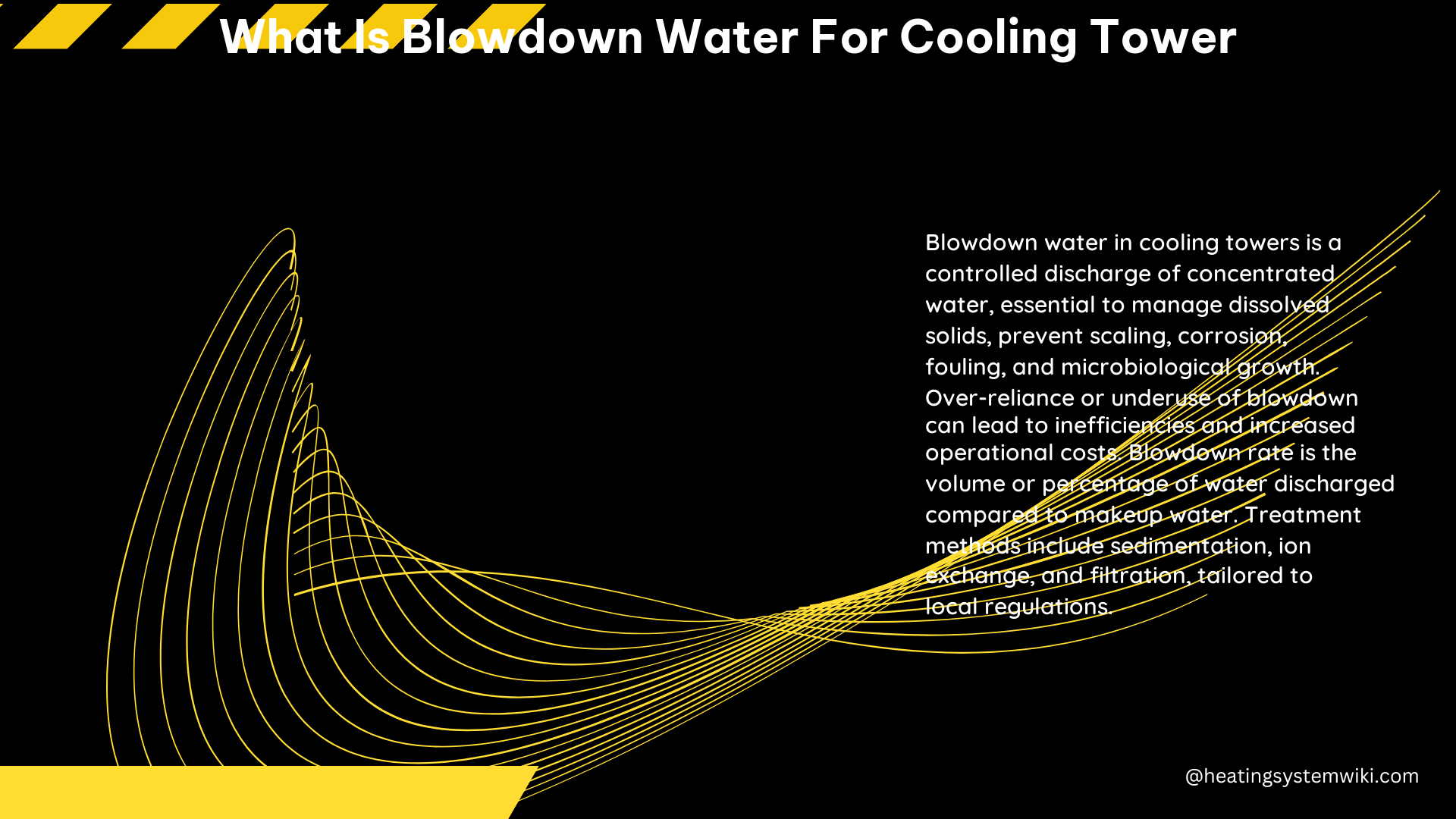Blowdown water for cooling towers refers to the portion of circulating water that is discharged from the cooling tower to control the concentration of dissolved solids and other impurities in the cooling water. This process is necessary to maintain water quality within acceptable limits and prevent the buildup of scaling, corrosion, and fouling in the cooling system.
Understanding Blowdown Water
The blowdown rate, which is the volume or percentage of water discharged from the cooling tower compared to the incoming makeup water, is typically expressed as a percentage or as a ratio. The ideal blowdown rate depends on several factors, including:
-
Cooling Tower Design: The design of the cooling tower, such as the type of fill material, the number of cells, and the air-to-water ratio, can influence the blowdown rate required to maintain water quality.
-
Water Quality: The quality of the makeup water, including the concentration of dissolved solids, minerals, and other contaminants, can affect the blowdown rate needed to keep the cooling water within acceptable limits.
-
Operating Conditions: Factors such as the cooling load, ambient temperature, and humidity can impact the evaporation rate and, consequently, the blowdown rate required to maintain the desired water quality.
Blowdown Methods

There are two primary blowdown methods used in cooling towers:
-
Manual Blowdown: In this method, the operator periodically opens a blowdown valve to release a portion of the cooling water. The frequency and volume of the blowdown are determined based on regular water quality testing and monitoring.
-
Automatic Blowdown Systems: These systems use sensors or controllers to continuously monitor water quality parameters, such as conductivity, pH, and mineral concentrations. The system then automatically adjusts the blowdown rate to maintain the desired water quality.
Blowdown Water Treatment
Wastewater treatment methods for cooling tower blowdown typically aim to remove contaminants, such as suspended solids, minerals, and organic matter, before the water is discharged or reused. Common treatment methods include:
-
Sedimentation: This process allows suspended solids to settle out by gravity in a settling tank or slant plate clarifier.
-
Ion Exchange: Ion exchange resins can be used to remove specific ions, such as hardness ions or heavy metals, from the water.
-
Filtration: Passing the water through filters can remove suspended solids and fine particles.
The benefits of blowdown water treatment include:
- Reduced maintenance requirements
- Lower fouling and corrosion rates
- Decreased chemical usage
- More stable water quality
However, cooling tower blowdown water treatment presents several challenges due to high salt concentrations and the presence of various chemicals added to the cooling water.
Blowdown Water Management
Management of blowdown water is a critical component in plant operation, with typical options including:
-
Discharge to Surface Waters: The blowdown water is discharged to nearby surface water bodies, such as rivers or lakes, after appropriate treatment.
-
Discharge to Wastewater Treatment Plants: The blowdown water is sent to a municipal or industrial wastewater treatment facility for further processing.
-
Treatment and Reuse: The blowdown water is treated on-site and then reused within the cooling system or for other purposes, such as irrigation or industrial processes.
-
Zero Liquid Discharge (ZLD): The blowdown water is treated using advanced technologies, such as evaporation or membrane filtration, to achieve a zero-liquid discharge state, where all the water is recovered and reused.
Sustainable Approaches
While traditional treatment methods for cooling tower blowdown water have focused on removing contaminants before discharge or reuse, there is a growing trend towards more sustainable and circular approaches. This includes:
-
Advanced Treatment Technologies: The use of reverse osmosis, evaporation, and zero liquid discharge systems to maximize water reuse and minimize liquid discharge.
-
Integrated Energy Efficiency: Utilizing waste heat from industrial processes to drive evaporators for cooling tower blowdown water treatment, reducing energy consumption and carbon emissions.
-
Real-Time Monitoring: The use of sensor technologies to measure scaling ion concentrations and optimize cooling tower performance, reducing freshwater and anti-scalant treatment requirements while preserving system health.
By adopting a more holistic and sustainable approach to cooling tower blowdown water management, facilities can achieve significant benefits in terms of water efficiency, energy efficiency, and environmental impact.
DIY Considerations
While it is not recommended to attempt cooling tower blowdown water treatment without proper expertise and equipment, there are some steps that can be taken to optimize cooling tower performance and reduce blowdown requirements:
-
Scale Inhibitor Treatment: Using chemical additives that raise the saturation point of the water, allowing it to carry a higher concentration of minerals without scale buildup. This can be calculated using the cooling water blowdown formula.
-
Selective Ion Removal: Employing automated chemical softening systems, such as BrineRefine, to selectively remove troublesome ions and reduce scaling risk, thereby decreasing blowdown and makeup water requirements.
It is important to note that any DIY efforts should be done in consultation with a water treatment expert to ensure safety and effectiveness.
By understanding the principles of blowdown water for cooling towers and exploring sustainable and DIY approaches, facility managers can optimize their cooling systems, improve water efficiency, and reduce the environmental impact of their operations.
